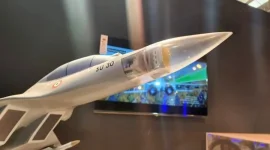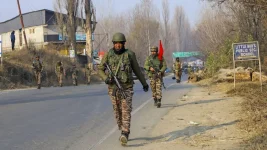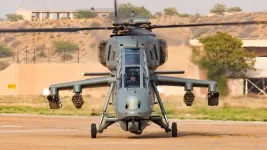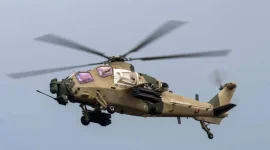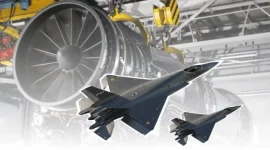- Views: 473
- Replies: 2
A recently released computer-generated video has sparked considerable interest within India's defence circles, offering a glimpse into the potential future of aerial warfare integration.
Shared on March 28 by Harsh Vardhan Thakur, the Chief Test Pilot at Hindustan Aeronautics Limited (HAL), the imagery depicts India's indigenous Light Combat Helicopter (LCH) Prachand operating in coordination with HAL's Warrior Loyal Wingman unmanned aerial vehicles (UAVs).
This visualization suggests a significant technological step forward for the Indian Air Force (IAF) and Indian Army – the implementation of Manned-Unmanned Teaming (MUM-T). The video portrays the LCH Prachand potentially functioning as a command platform, or 'mothership,' directing the accompanying Warrior drones during operations.
The LCH Prachand, meaning "Fierce" in Hindi, is the country's first locally developed multi-role light attack helicopter. Designed and manufactured by HAL, it is specifically engineered for high-altitude combat environments and precision attack missions.
Officially inducted into service in October 2022, the helicopter has demonstrated its capabilities in challenging terrains like Siachen and Ladakh. It possesses a high service ceiling of 6,500 meters and is equipped with a 20mm cannon, rockets, and air-to-air missiles.
The Indian government recently underscored its confidence in the platform, approving the acquisition of 156 additional Prachand helicopters (90 for the Army, 66 for the IAF) in a deal valued at approximately ₹62,000 crore.
Simultaneously, HAL is developing the Warrior Loyal Wingman as part of its broader Combat Air Teaming System (CATS) initiative. This advanced unmanned platform is designed as a stealthy force multiplier, intended to fly alongside manned fighter jets like the Tejas or Su-30MKI, extending their sensor reach, carrying additional weapons, and undertaking high-risk missions to minimize danger to pilots.
The conceptual video shared by Thakur shows the Prachand, crewed by a pilot and a weapon systems operator in its tandem cockpit, seemingly collaborating with or directing the Warrior UAVs in close formation. This raises the prospect of the LCH expanding its role beyond direct attack, potentially serving as a tactical command hub for unmanned systems in complex battlefield scenarios.
Employing a helicopter like the Prachand as a mothership for UAVs represents an innovative approach in military aviation. While larger, fixed-wing aircraft are typically envisioned for such roles within the CATS framework, leveraging the LCH's unique attributes – its agility, hovering capability, and proven high-altitude performance – could unlock new tactical advantages. A Prachand could potentially coordinate a group of Warrior UAVs for reconnaissance, target engagement, or drawing enemy fire, while maintaining a safer standoff distance itself.
The Warrior UAV, reportedly powered by twin HAL PTAE-7 turbojet engines, is being designed for low observability and autonomous operations. With a projected range exceeding 700 km and internal bays for precision munitions, it could perform deep strikes or relay critical intelligence.
Thakur has previously mentioned plans for an AI-based voice command interface for the Warrior, potentially allowing pilots in the controlling aircraft (like the Prachand) to issue verbal commands to the UAVs, streamlining control and enhancing situational awareness.
This MUM-T capability could significantly enhance India's operational effectiveness, particularly along its mountainous borders where the Prachand is already a valuable asset. Such integration would allow Prachand crews to deploy Warrior drones from behind cover to scout hostile positions, neutralize enemy air defences, or engage targets without directly exposing the helicopter. The expendable nature and stealth features of the UAVs make them suitable for high-threat missions.
It is important to note that the CGI video represents a concept and not a formally announced program of record at this stage. Integrating the LCH Prachand with the Warrior system would involve overcoming significant technical challenges, including establishing secure and high-bandwidth data links, ensuring platform compatibility, and potentially upgrading the Prachand's avionics suite – likely its Integrated Avionics and Display System (IADS) – to manage UAV control functions.
Furthermore, the Warrior UAV itself is still under development, with HAL reportedly investing substantial funds and targeting initial flights around the 2024-2025 timeframe. Successful integration would necessitate synchronized development timelines, extensive testing, and the formulation of new operational doctrines.
Nevertheless, this vision aligns with India's broader push towards Atmanirbhar Bharat (self-reliant India) in defence manufacturing and the modernization of its armed forces through advanced technology. If realised, the pairing of the LCH Prachand with Warrior Loyal Wingman drones could create a versatile, potent, and cost-effective combat ecosystem for high-altitude warfare.

